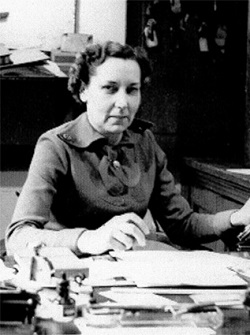Day, S., Keeping in Touch. Geoscientist 30 (5), 5, 2020
https://doi.org/doi: 10.1144/geosci2020-084, Download the pdf here
 I don’t know about you, but I am drowning in video calls. I’m not sure I’d even heard of Zoom before this all began (what feels like approximately 250 years ago), but now it is the perpetual calendar appointment, popping up on my phone with the regularity of my current handwashing routine.
I don’t know about you, but I am drowning in video calls. I’m not sure I’d even heard of Zoom before this all began (what feels like approximately 250 years ago), but now it is the perpetual calendar appointment, popping up on my phone with the regularity of my current handwashing routine.
With it has come various bits and bobs of advice about how to avoid something called ‘Zoom burnout.’ According to psychologists, constantly paying attention to our fellow video callers’ body language and social cues can leave us anxious and stressed. (I would add to that, the constant fear that you might have left a pile of washing or last night’s leftovers in the background.) Advice for combatting ‘Zoom burnout’ is fairly straightforward – try to limit calls to those strictly necessary, and consider only switching on your audio for some meetings – especially those which would have been conference calls to begin with.
There’s no doubt that the benefits outweigh the drawbacks – in the past few weeks I’ve managed to keep in touch with friends and colleagues all over the world. Video conferencing is also keeping conference and events programmes going – an interesting experiment which might lead the way to widening access to such events in future. As I write, the European Geosciences Union (EGU) is holding its 2020 General Assembly remotely as ‘EGU2020: Sharing Geoscience Online’ – what is usually a meeting bringing together around 16,000 geoscientists in one place has been replaced by a diverse programme of online scientific sessions, symposia, debates and meetings. Meanwhile, some of the Society’s own offerings have been transferred online – including this months’ public lecture (more details at www.geolsoc.org.uk/events.)
In moments of crisis, keeping in touch is always at the forefront of our minds. In 1941, with the blitz underway and the Society’s premises at Burlington House suffering from bomb damage, a decision was made to evacuate over 8,000 books (over a third of the total stock) from the Library’s collections. ‘It is desired to effect some dispersal of the books in order to reduce the risk of loss by enemy action’ was the appeal to Fellows, who stored them in basements and attics across the country. It was still possible, though, to borrow volumes.
‘A system of paper and string was brought into action’ recalled Nancy Morris (pictured right), the Society’s Clerk from 1940 to 1962. ‘The Fellow requiring the books was told to write to the Fellow who had it evacuated who with paper and string supplied by us, sent it to the one who wanted it and he returned it direct, so none of these books came back into London.’
I find that story, geologists posting books in pre-supplied paper and string around the country so that their studies continued uninterrupted, strangely comforting. A reminder that our networks still exist, even when we can’t meet in person.
With that in mind, don’t forget that alongside your video conferences and online meetings, you can always employ the relatively low tech communication method of writing to Geoscientist magazine – our letters page is always open for contributions, and there’s no risk of Zoom burnout to boot.
Sarah Day FGS, Editor
[email protected]
@geowriter